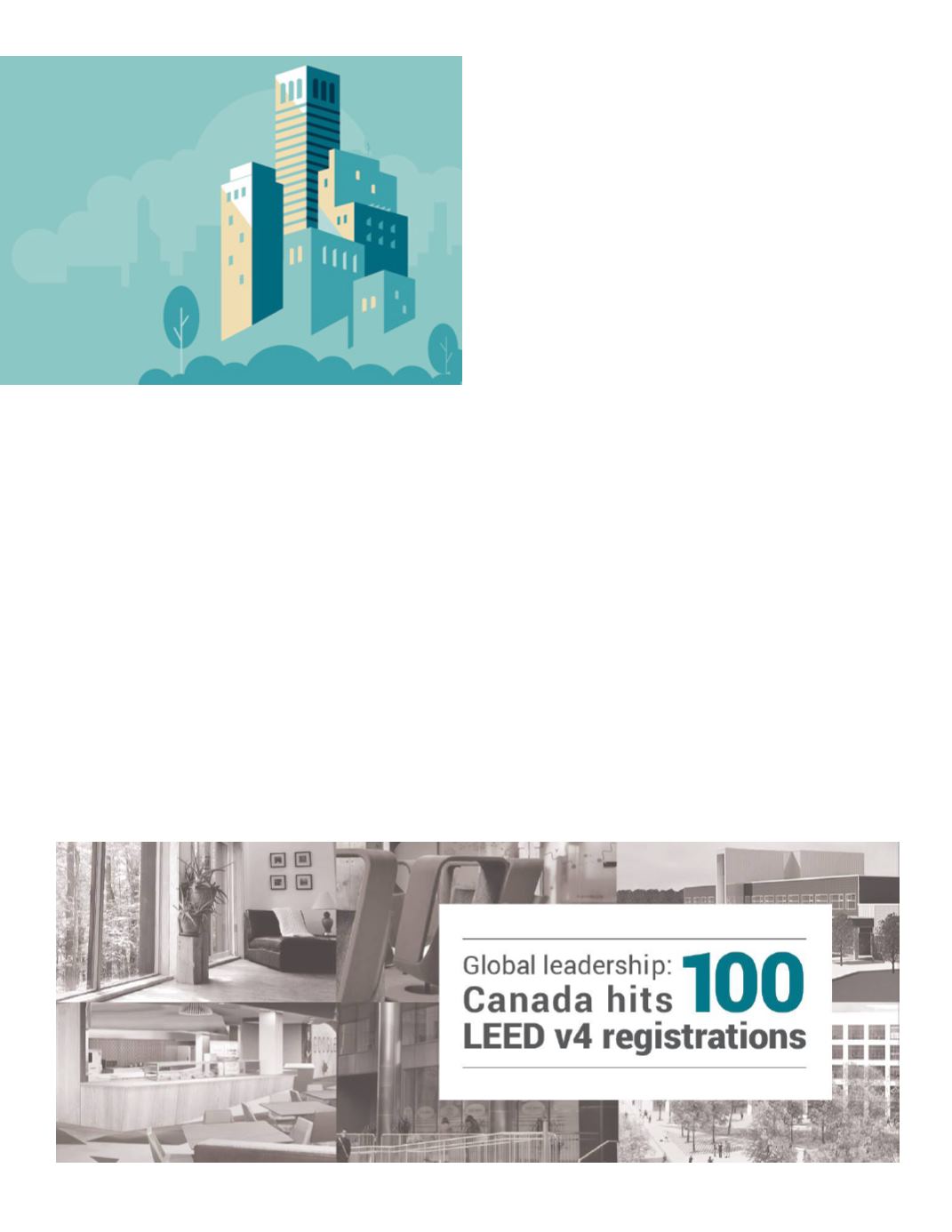
to date have been focused on improving
energy performance. “Energy use is only
one factor of [a building’s] carbon footprint,
which also depends on the carbon-intensi-
ty of the local grid and fossil fuels used,
for example,” he says. “Since the primary
goal is curbing greenhouse gas emissions,
we have to take a carbon-centric approach.
Reducing emissions has to be the mea-
sure of our success.
“Since buildings are large, stationary us-
ers of energy that have long lifespans, they
are prime places for investing in measures
that reduce emissions,” says Mr. Hutchin-
son. He explains that new construction
projects present an opportunity for creat-
ing low-emissions building stock for future
generations. “New buildings can be de-
signed for optimum efficiency and resilien-
cy right from the start,” he says. But since
over 80 per cent of existing buildings are
expected to be still in operation in 2030, a
large-scale market transformation can only
be achieved when the environmental per-
formance of existing buildings is also ad-
dressed, he adds. “Deep retrofits have to
be part of the plan if we want to meet the
building sector’s zero carbon objectives.”
The good news is that Canada’s green
building sector is up to the task – and is
among the most advanced in the world,
says Mr. Hutchinson. “We are in a good
position for reducing – and eventually elim-
inating – greenhouse gas emissions from
building operations,” he explains. “Over
AUGUST 2017
H
business elite canada 29


